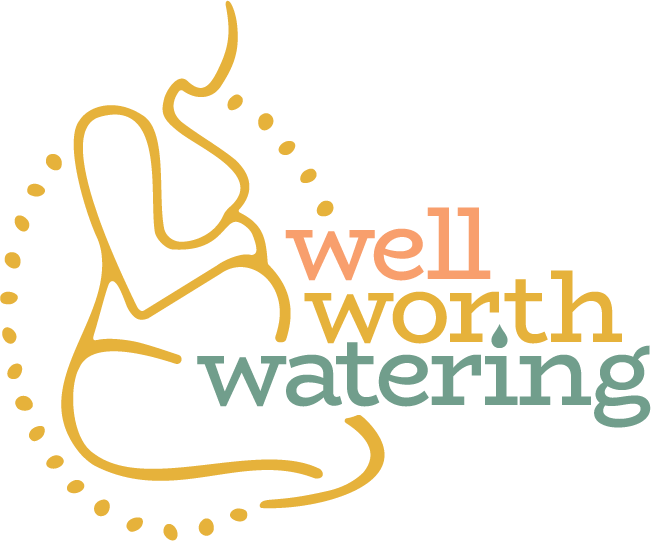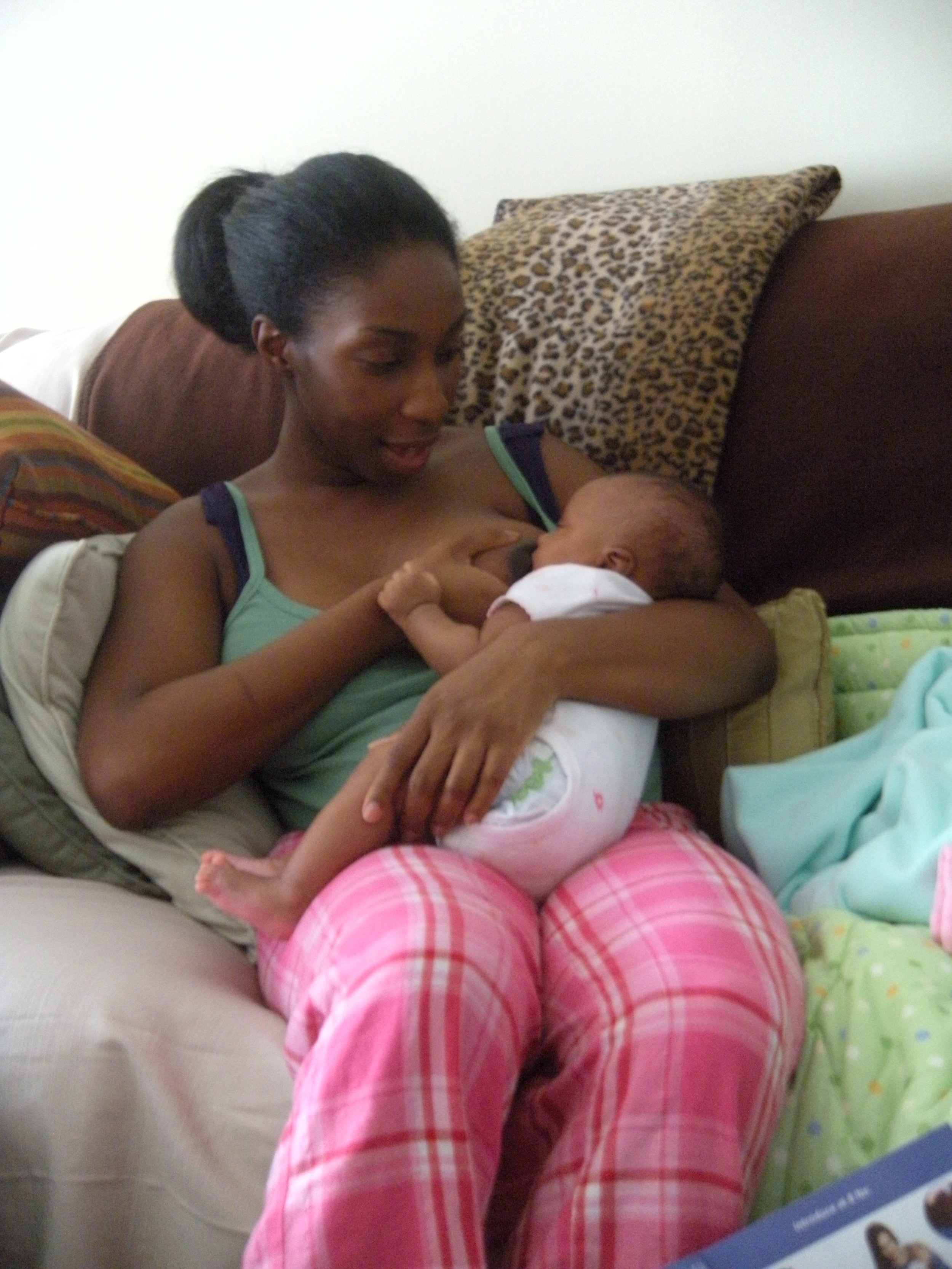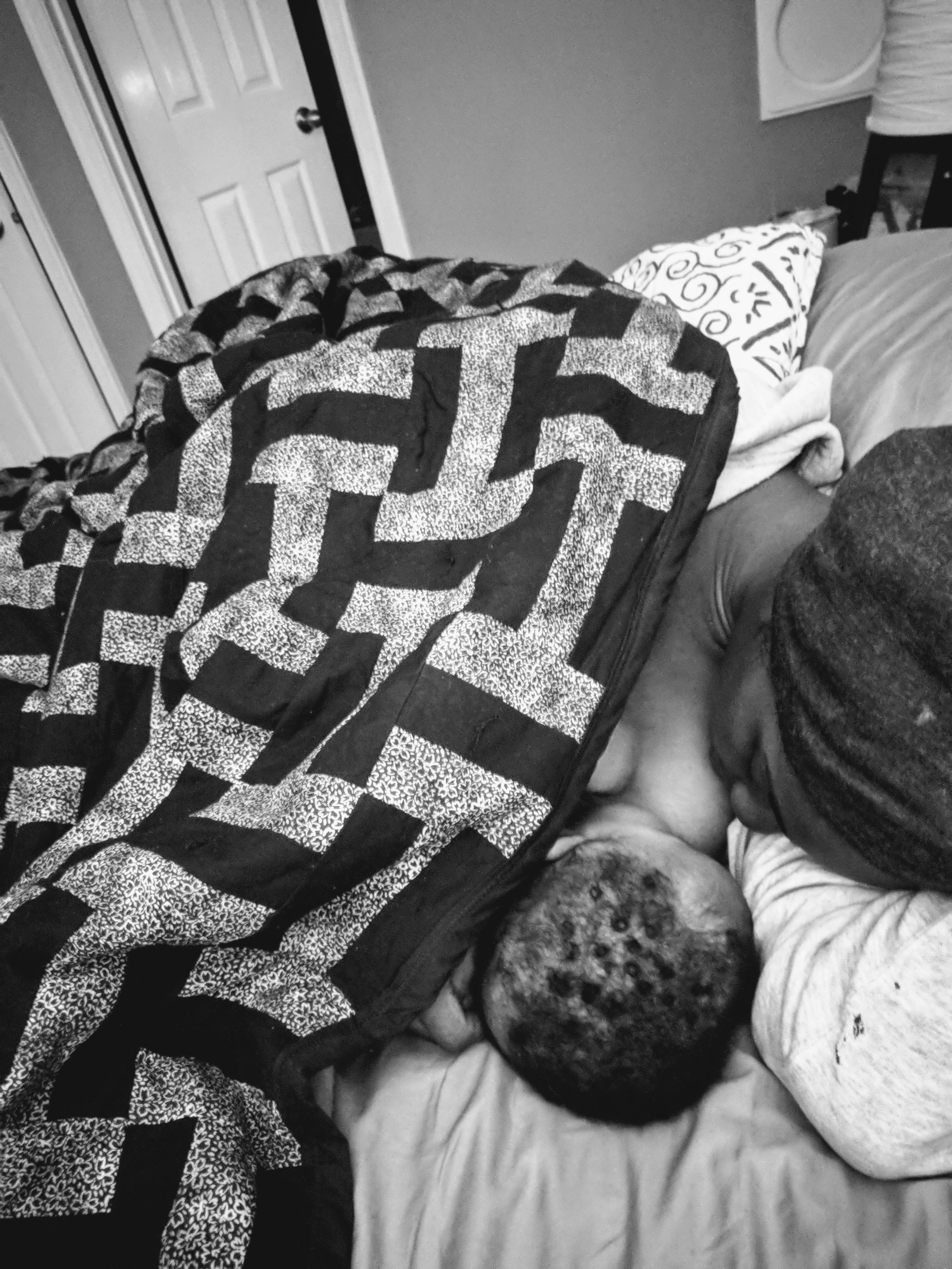What’s Natural Should Be That Way: My Breastfeeding Stories
I have sensitive breasts. They have feelings and emotions all their own. They’re sensitive to temperature, touch and any suspected shade thrown toward their appearance.
Nursing Malcolm about 3 months postpartum.
When I found out I was pregnant with my daughter, breastfeeding was a decision I was sure I wanted to make even though I’d never seen or heard about anyone in my family breastfeeding. My mother nursed me for about 3 months but stopped due to persistent pain during feeds. She tried to nurse my older brother but couldn’t due to “inverted nipples.” So I didn’t have much wisdom to take with me for the ride.
There was nothing more natural than breastmilk in my eyes though. “That’s why God put em’ here,” was my favorite refrain when I looked down at my naturally saggy boobs. No breastfeeding books, no lactation consultant phone numbers just in case. With faith and a what-could-go-wrong attitude, I walked into both of my nursing seasons with nothing but optimism.
I remember the hospital lactation consultant pushing my newborn onto my breast and declaring her job done with a big generic smile. I was left to figure the rest out.
I’d just given birth to my daughter, Charlotte. Though the lactation consultant who came to see me assured me that our latch looked good, my nipples still cried foul. Charlotte seemed content and she was getting all the colostrum I had to offer in those hours and days after birth, but nursing was far from what I imagined. It straight up hurt.
My first helpful resource came in the form of my postpartum nurse. When my milk came in, my nurse lovingly cheered me on. When my sensitive nipples turned raw and each latch curled my toes, it was my nurse who checked our latch and encouraged me to stick with it.
“Just hang in there” she said. “The first couple of weeks are the hardest. It will get better, I promise.”
She was a mother of 2 who had nursed both of her boys. She explained to me that there is a learning curve that your body and baby go through when you first start a nursing relationship. She described how she would wince and tense up, just as I was, before a feeding in the early days of feeding her sons. With time, she went on to nurse them both well into their first year. “Your baby will get better at latching and you’ll be cruising soon.” I’ll never forget her reassurance, kindness or the breathtaking tattooed-sleeve that peeked through her scrubs.
Charlotte & I about 7 weeks postpartum.
By the time Charlotte was 3 weeks old, the pain during latching was replaced with an intense admiration for my body and its ability. I’d hit my stride. My engorged breasts began to subside, I’d figured out how to feed in a side-lying position (a life saver for many sleepless nights) and I felt good again.
Don’t ask: TELL people what you need.
I went on to nurse Charlotte for 11 months. When I went back to my freelance work part-time around her 6-month mark (an opportunity most women, let alone black women) my supply naturally dwindled while I did my best to keep up with what she needed when I had to be away or on-site.
If I could do it all again, I would have asked my on-site client for a private space to pump, but I didn’t. I didn’t see it as advocating for something I deserved, regardless of whether I was a full, part or seasonal worker. I immediately told myself a story about them categorizing me as a nuisance. So, like far too many women, I pumped in my car, in bathroom stalls or sometimes rushed home after my shift just to relieve my full and leaky breasts. Weeks later that same client gladly encouraged me to use their conference room to nurse my daughter when I’d brought her in for a visit.
I tell you all this to encourage you to learn from my experience. Nursing mothers thrive in supportive environments with advocates around them, but advocating for your rights is always, ALWAYS the right move.
I personally always felt more comfortable and let-down easier in quiet nursing spaces. So, I always looked for nursing rooms or a discreet corner in public. But that wasn’t always an option. I spent too much time fussing under nursing covers, only to be fed up and just feed my baby wherever, whenever—as it should be. Whoever wanted to gawk at my exposed brown breast could do just that, but it took me too long to get there. Do what is best for you, your comfort level and your baby.
My second time wasn’t charming at all.
During my pregnancy with Malcolm, I thought I’d be on easy street when it came to nursing. I wasn’t fazed by the sensitivity from my breast preparing themselves to nurse or the crusty nipples. Yea, apparently many women leak tiny amounts of colostrum that just dries and can form a crust on the nipples. That one threw me for a loop the first time around but not this time.
After Malcolm was born, I expected the same hallmarks. I wasn’t surprised that once again, nursing hurt. I used the same latching techniques while I gritted my teeth through latches. I remembered the words of my first postpartum nurse… ”the first couple of weeks are the hardest. Hang in there.”
As 3 weeks turned into 1 month, I began wonder whether this was life. I was literally in tears at the end of each feed. Raw, pink flesh peeked through each nipple. They’d started to detach at the base where the nipples meet the expansive brown of my areolas. I felt hopeless and told myself I was a hand-picked failure because this was my second baby and I couldn’t get it right.
For weeks I didn’t ask for help. I didn’t call my midwives or birth assistant. I thought about my mother’s memories of my ravenous nursing and wondered if my son had inherited a super strength sucking reflex. It seemed Malcolm left no time for me to position my breast for a deep latch. Every feed turned into a cruel game of Double Dutch, with me scared and waiting for the right moment that never came.
This time, my first resource was my husband, who watched me cringe through far too many feeds. It was Mike who helped me search for a local lactation consultant. It was my husband who gave me perspective and assured me I could do this with some help.
I got help from an amazing lactation consultant who suggested I shift my technique and air out my very damaged nipples, always exposing the other breast during feeds. Soon, my skin started to heal and every latch was a deep, pain-free experience.
This time when I returned to my work, I knew that I had a right to ask for a pumping space. I felt more confident nursing Malcolm anywhere. I nursed him for 13 months.
When I look back on both of my experiences, I recognize the support that I received along the way. It made all the difference.
I look forward to the day when breastfeeding rates among African-American women no longer lag behind our white counterparts. I envision a tomorrow where hospitals, workplaces and systems everywhere advocate for EVERY nursing mother. What’s natural should feel and BE that way for every mother.






